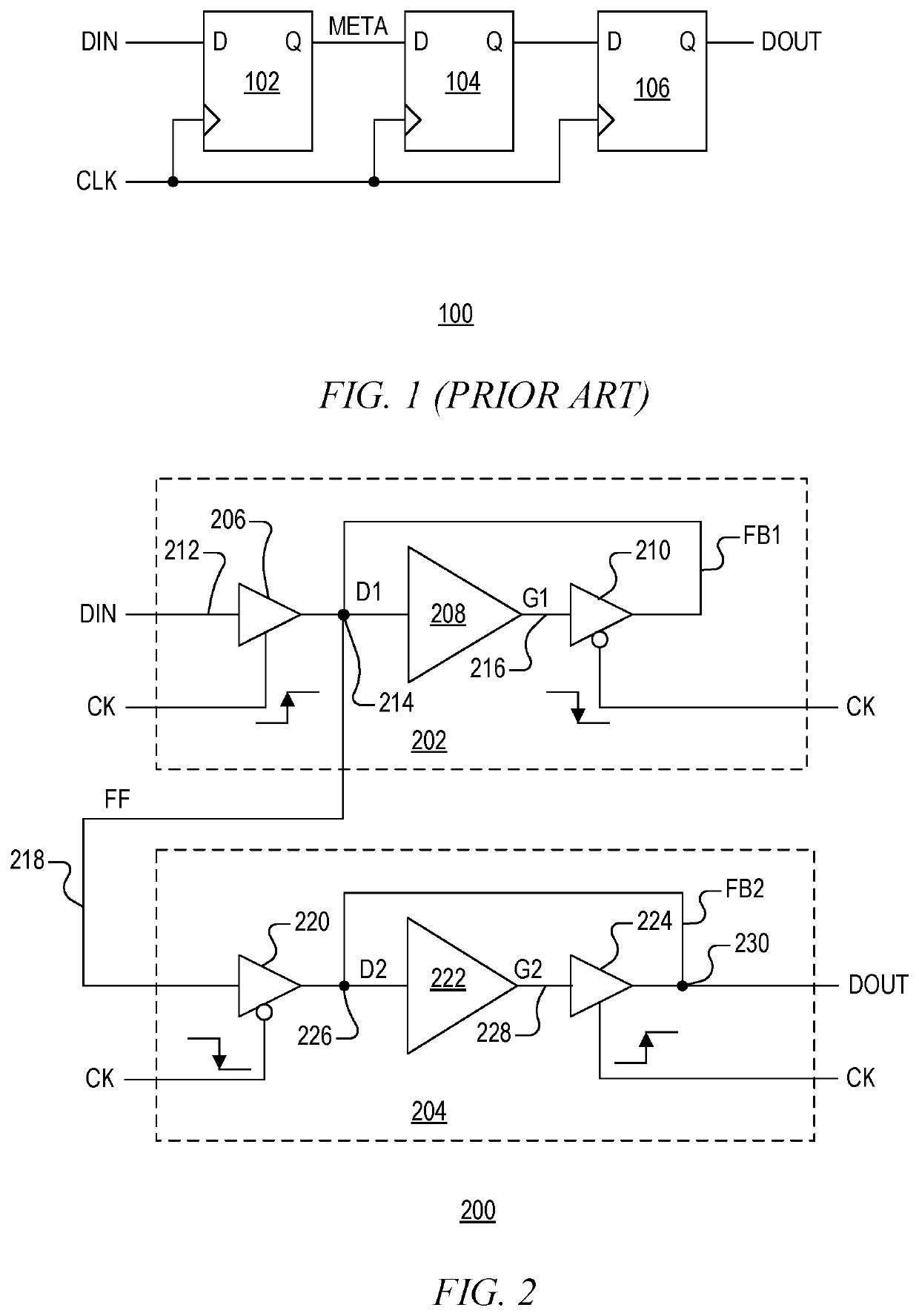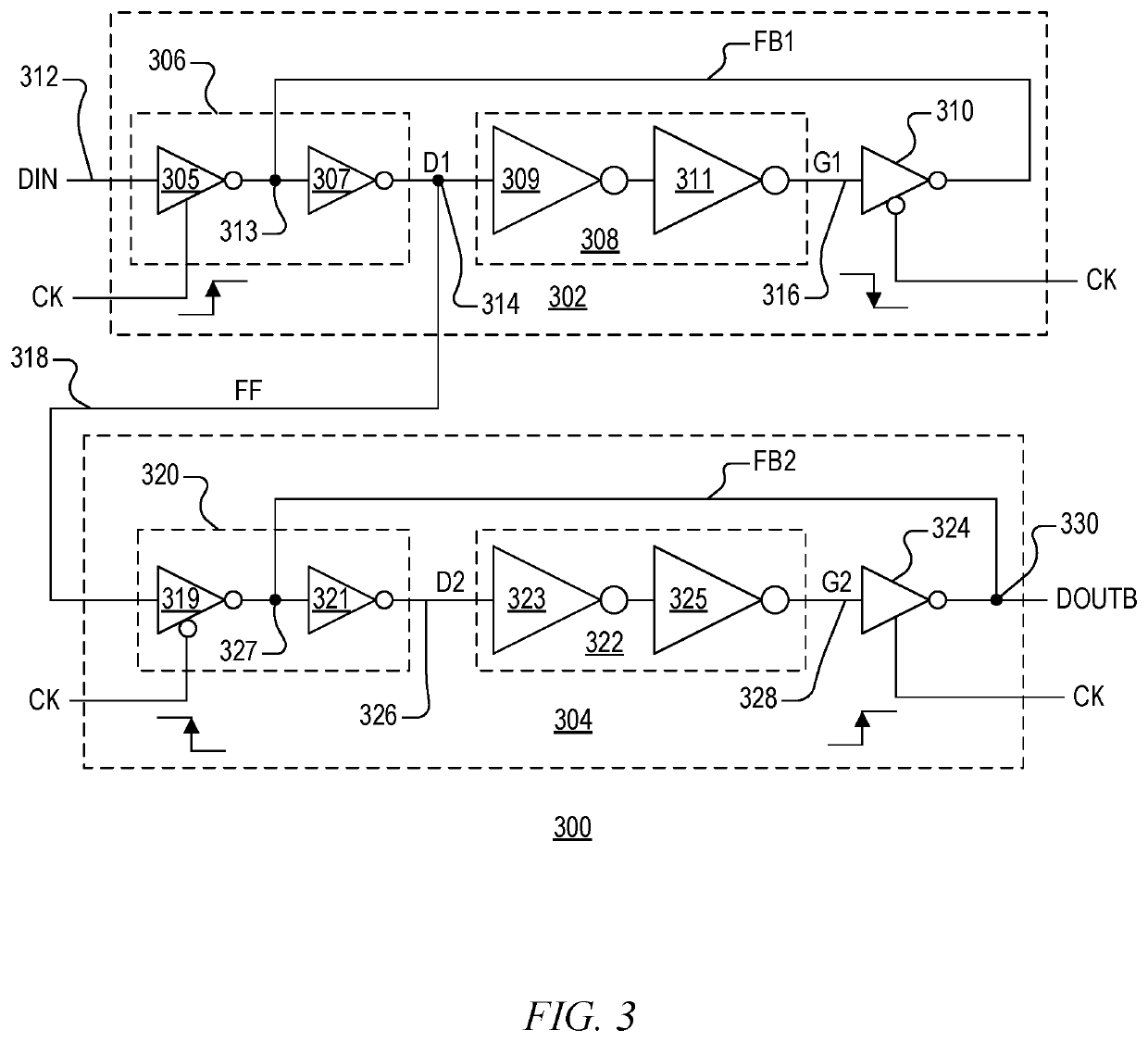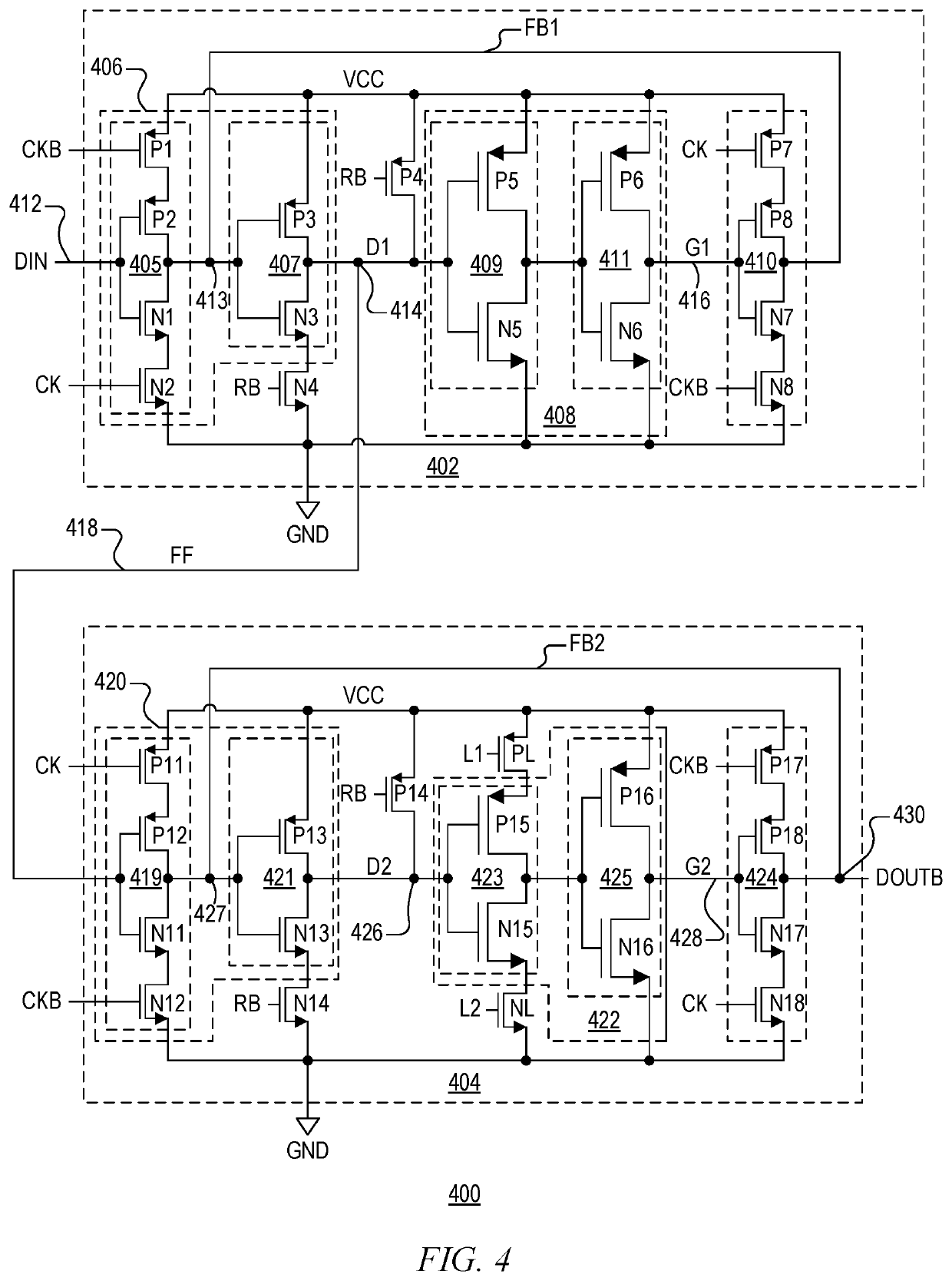High-speed synchronizer with lower metastability failure rate
a high-speed synchronizer and failure rate technology, applied in the field of data synchronizer circuits, can solve the problems of significant latency, metalstability failure, and consume valuable silicon area, and achieve the effects of reducing metastability, increasing gain-bandwidth products, and increasing gain-bandwidth products
- Summary
- Abstract
- Description
- Claims
- Application Information
AI Technical Summary
Benefits of technology
Problems solved by technology
Method used
Image
Examples
Embodiment Construction
[0017]The proposed latch structure addresses the metastability problem with reduced latency, silicon area, and power consumption. The synchronizing latch structure may be used to construct a D-type flip-flop (DFF) which also exhibits reduced latency, silicon area, and power consumption as compared to conventional multi-flop synchronizers. A relatively large buffer device having a relatively large drive strength and reduced loading capacitance is inserted within the latch loop. In this manner, the added buffer devices increase the loop gain-bandwidth product of the latch loop of each latch of a DFF, so that each latch, and hence the DFF as a whole, can resolve metastability much faster. The buffer devices boost the loop gain by a significant amount while only contributing high-frequency poles. In this manner, the loop gain-bandwidth product of each latch can be extended significantly, leading to a faster resolving time and thus lower metastability failure rate of the DFF.
[0018]FIG. 2...
PUM
 Login to View More
Login to View More Abstract
Description
Claims
Application Information
 Login to View More
Login to View More - R&D
- Intellectual Property
- Life Sciences
- Materials
- Tech Scout
- Unparalleled Data Quality
- Higher Quality Content
- 60% Fewer Hallucinations
Browse by: Latest US Patents, China's latest patents, Technical Efficacy Thesaurus, Application Domain, Technology Topic, Popular Technical Reports.
© 2025 PatSnap. All rights reserved.Legal|Privacy policy|Modern Slavery Act Transparency Statement|Sitemap|About US| Contact US: help@patsnap.com



